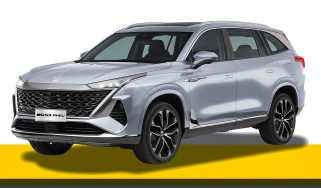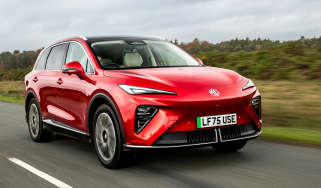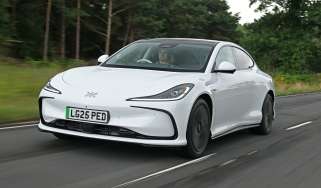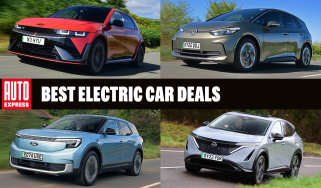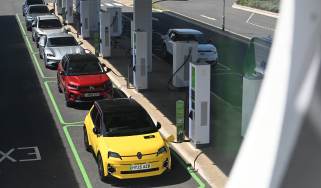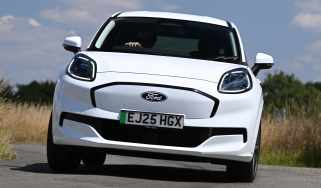What is MG? Complete brand, model and tech guide for UK car buyers
The inside story of how MG was born again – ready to take on Tesla, and all comers
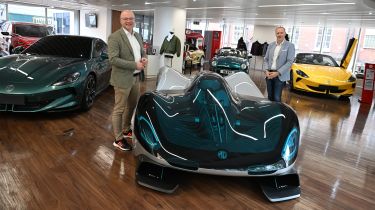
The UK’s number one Chinese car company is a brand born 101 years ago in the verdant English countryside: MG Motor. No, we haven’t lost our minds: Shanghai Automotive Industry Corporation snapped up the badge after MG Rover plunged into administration in 2005, and it now sells more cars in a single year than the firm delivered in its pre-Chinese history. That’s progress.
Any new entrants looking for the playbook on how to crack Europe should kick off by reading up on MG: an incessant supply of increasingly competitive cars, in simple ranges with lots of powertrains; affordable prices undercutting the mainstream; a big, nationwide dealer network.
One aspect isn’t so easy to replicate, though: a well known badge, loved by many. Head of product planning David Allison has spoken at huge global automotive conventions, but reckons his nerviest speech ever was to about 100 passionate members of the MG Car Club – right here in the UK.
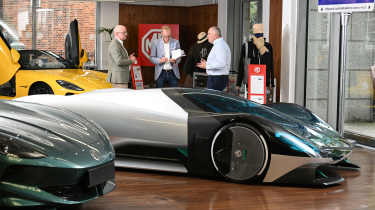
“Those guys are immensely satisfied the brand still exists – so many have disappeared over the years and aren’t likely to be resurrected,” he says. “MG is more successful now than it’s ever been. They might have a garage full of classic MGs, but they've probably got an HS, ZS or MG3 as well.”
We’re in a meeting room in MG’s European headquarters on London’s Marylebone Road, a stone’s throw from quintessential tourist spots such as Madame Tussauds waxworks and Sherlock Holmes’s flat. But how British is MG these days?
“We’re very much a global organisation with its heart in the UK,” Allison muses. “We manufacture our cars in a different part of the world now, but the brand is over 100 years old, and an awful lot still goes on in the UK: advanced design and engineering. And it’s not insignificant that this is still MG’s biggest export market.”
That gives Allison a lot of clout in the MG machine. After all, he delivers 30 per cent of the HS SUV’s global volume. He and his team of five people – the leanest in the industry, Allison reckons, despite selling more than 80,000 cars three years running – decide which MGs to import and their ranges, specs and prices. They’re in charge of the promotional offers, volume forecasting and even getting the cars into the country and out to dealers.
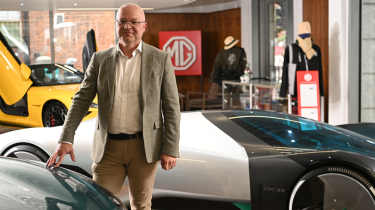
How does he decide which MGs come here? “It’s a bit like being in a sweet shop,” Allison explains. “It’s very tempting to pick every single one and cram it all in the little bag, but we have to be respectful of what would be appropriate for this market, because it’s the world’s most complex.”
That means every import has to work in retail, satisfy a broad spectrum of fleet buyers and make financial sense on the massive Motability scheme, which funds leases for disabled motorists. Pick-ups are out, and although MG has just launched its IM sub-brand with two performance EVs, most of that range is China-orientated and too big for UK roads.
With great discipline, Allison targets the four market segments that deliver 80 per cent of UK volume: ‘B’ supermini and SUV with the MG3 and ZS and S5 EV, plus ‘C’ hatchback and SUV with the electric MG4 and HS. Buyers choose from a mix of petrol, hybrid, plug-in hybrid and pure electric, and although MG is known as an EV brand, its share of registrations has dropped from 39 per cent when the MG4 was flying, to 27 per cent last year.
“We could be selling an awful lot more petrol cars than we do currently,” chimes in Guy Pigounakis, MG’s commercial director and another motor-industry veteran. Like David Allison, he ended up at Hyundai after launching the MG F roadster back in the nineties.
“We’ve deliberately held back supply of pure ICE cars, so it doesn't compromise where we want to track in terms of emissions. That’s a good example of how the ZEV mandate is framing [our sales] policy.”
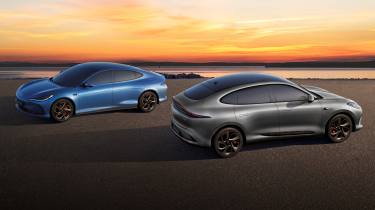
ZEV mandate – the UK’s ambitious ramp-up targets for manufacturer EV sales – comes up frequently in our two-hour conversation. “I don’t think many dealers like electric cars: they get stuck with the part-exchanges, the [unreliable] residual values and demonstrator cars, and they just see it as costing them more and more money,” says Pigounakis.
“Some hope the whole net-zero strategy will just be abandoned, and they’ll be back to selling combustion cars. I keep making the point they won’t, because manufacturers build cars for a global market.”
And China is the poster child for EVs, which powered half of its 31-million new-car market in 2024. Perhaps the retailers should count their blessings that MG isn’t an EV-only franchise. Ironically it was the MG4, the electric hatchback that was cheaper but better to drive than VW’s ID.3, that took the brand to the next level.
“The MG4 was the first credible, award-winning electric car that actually achieved price parity with internal combustion-engine competitors,” says the sales boss. “The industry always said: as soon as you achieve price parity, adoption should accelerate significantly. Well, EV retail is definitely improving and we should take a bit of credit for that.”
Low-cost manufacturing of EVs is one of the prime advantages China brings. Allison recalls launching Hyundai’s first Ioniq EV almost a decade ago. “It had 28.3kWh, a 130-mile range and we thought it was incredible. Look at the relative cost of that car too.” He chuckles at the comparison with today’s cars.
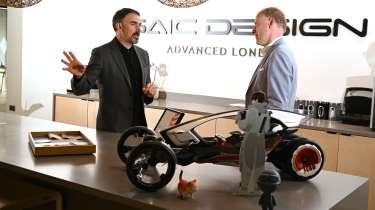
“Chinese ownership brings stability, allowing us to operate in a way that MG couldn’t in its earlier years. We have a huge domestic market opportunity and access to a huge product portfolio.”
Tapping that unlocks the next UK launch, the S6 – another EV and a larger sibling to the S5. Its powertrain offsets the fact the HS isn’t offered in purely zero-emissions guise. That model does have the brand’s only plug-in hybrid, but it’s available with a regular hybrid too, just like the MG3 and ZS. “From nowhere, we are the second biggest [retailer] of hybrid vehicles in the UK, behind Toyota,” says Allison. “But we’re not overly reliant on one type of car or powertrain.
“If you can offer the right product with the right powertrain at the right price, in a market which is very, very dynamic, then that’s the best opportunity to be successful.” All very good advice for Chinese rivals desperate to eat MG’s lunch. Before our interview, Pigounakis was in a long meeting analysing their performance – so what’s his verdict?
“The speed at which the Chinese brands have established themselves in the UK has been nothing short of astonishing. It completely eclipses previous new entrants: the Japanese, the Koreans. The legacy brands have really suffered. But we will continue growing this year, and that’s in the context of about 100,000 other Chinese cars being registered.”
He sees the new entrants following Hyundai and Kia’s original strategy of putting cars into rental fleets, getting their products seen on the road and creating a rapid turnover of metal to feed retailers’ used-car lots. “It’s an absolutely cast-iron route to market, which gets cars on the road,” says Pigounakis. “That gives people confidence and makes them think: ‘I'll take a look as well’.”
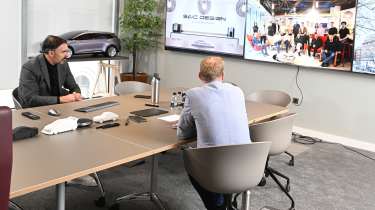
The one thing that makes him envious? “[The other Chinese brands] are clearly spending a fortune in marketing. So, you know, hats off. And they are buying a lot of fleet business.” Pigounakis is sanguine: MG has pivoted to more profitable retail sales, he claims, for a 50:50 mix.
Two initiatives show MG’s growing confidence: the Cyberster roadster and the IM brand. The IM5 saloon and IM6 SUV are two high-performance electric cars, bang in the middle of the £40,000-£60,000 market previously beyond MG’s reach. The IM6 packs 742bhp, outgunning the Tesla Model Y, but costs £11k less. DC charging – at around 400kW, thanks to its 800V architecture – is up there with Europe’s best. The IM5 saloon follows the same blueprint to steal sales from Tesla’s Model 3.
“No-one’s really taken on Tesla head-to-head; our two cars sit nicely as competitors for theirs,” says Pigounakis. In the first few weeks, MG has bagged 750 orders including a 100-unit fleet deal; company-car tax breaks make EVs hard to resist.
The Cyberster roadster won’t be top of any company’s choice list, but it’s the defining work of MG’s advanced design studio, perched on the floor above the product and sales teams. Design director Carl Gotham and his 20 interior and exterior designers, who shaped the first HS and the MG4, do “our own trend work, [define] where the landscape is going and where we think MG should be active”, Pigounakis says.
Resurrecting a two-seat MG was a mission for Gotham, which the London team advocated for years. “Back in 2018, we thought that we needed a sports car for the 100-year anniversary, we really did. And thankfully it came to fruition,” Gotham tells us.

The electric roadster revived a segment that had been dormant since Tesla’s ceased production in 2012. But if ICE sports cars are niche, replacing a V8 with electric motors must make for a tiny customer base? Allison argues its value is measured way beyond mere sales, saying: “We wouldn’t have done a central feature partnership at Goodwood without Cyberster, nor might we have been in position to do the IM products as well: it gave us the ability to elevate the brand and the price point.”
And the London studio’s coupé concept remains a possibility: “If you were looking at trying to get a little more from the initial investment, the coupé makes an awful lot of sense,” Allison concludes.
MG has gone full circle: the first ‘new’ car under Chinese ownership was a warmed-over TF roadster in 2008. And, following Longbridge’s demise, European production is set to be rebooted, although the exact plan is a closely guarded secret. “We’re going to have to find somewhere to build cars in an environment which is tariff-friendly,” says Pigounakis.
But even a 48 per cent tariff isn’t holding MG back: SAIC’s registrations are up 20 per cent in Europe in 2025, and set to smash the 250,000-unit mark this year. The challenge will be staying ahead of BYD and company. But for now, Allison and Pigounakis can reflect on a job well done: they’ve already achieved what a host of Chinese car makers will spend the next decade trying to emulate.
| UK models: | ZS, HS, S5 SUVs, 3 and 4 hatchbacks, Cyberster, plus IM5 and IM6 EVs |
| Our pick: | HS – the best Chinese hybrid on sale |
| How big in China? | Number one, with 4.639 million vehicles delivered in 2024 |
| 2024 global exports: | 1.082 million |
| 2025 UK registrations: | 65,394 |
| Retailer network and warranty: | 155 dealers; seven-year/80,000-mile warranty |
| We say: | With its dealer network and high-quality cars, MG has risen from the flames to spearhead the Chinese invasion of Europe |
Chinese car brands ranked by UK impact
Below is our Chinese power list, with all 17 brands ranked on current and potential UK market impact. Click the links to explore each manufacturer in detail...
| Rank | Brand |
| 1 | MG |
| 2 | BYD |
| 3 | Chery |
| 4 | Changan |
| 5 | Jaecoo |
| 6 | Leapmotor |
| 7 | Omoda |
| 8 | Polestar |
| 9 | XPeng |
| 10 | Geely |
| 11 | Smart |
| 12 | Lotus |
| 13 | GWM Ora |
| 14 | GWM Haval |
| 15 | GWM Poer |
| 16 | Maxus |
| 17 | Skywell |
Did you know you can sell your car through Auto Express? We’ll help you get a great price and find a great deal on a new car, too.
Find a car with the experts

